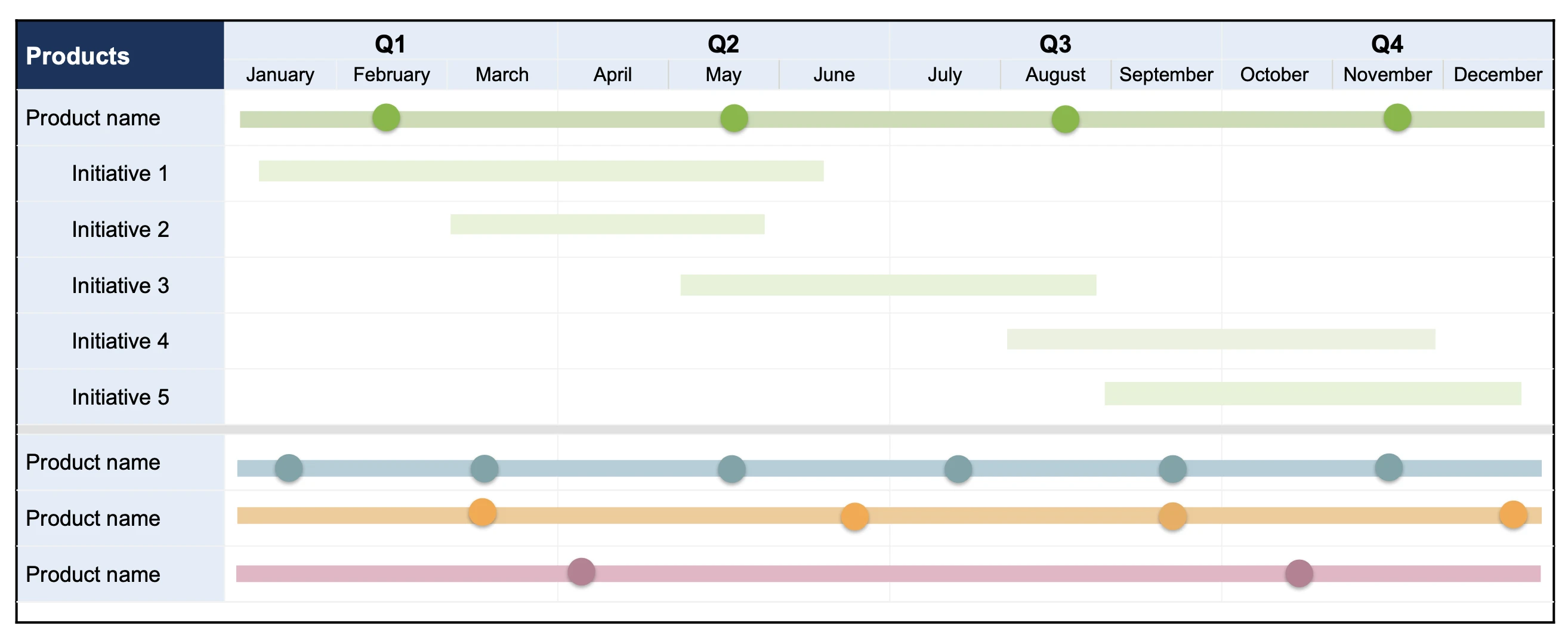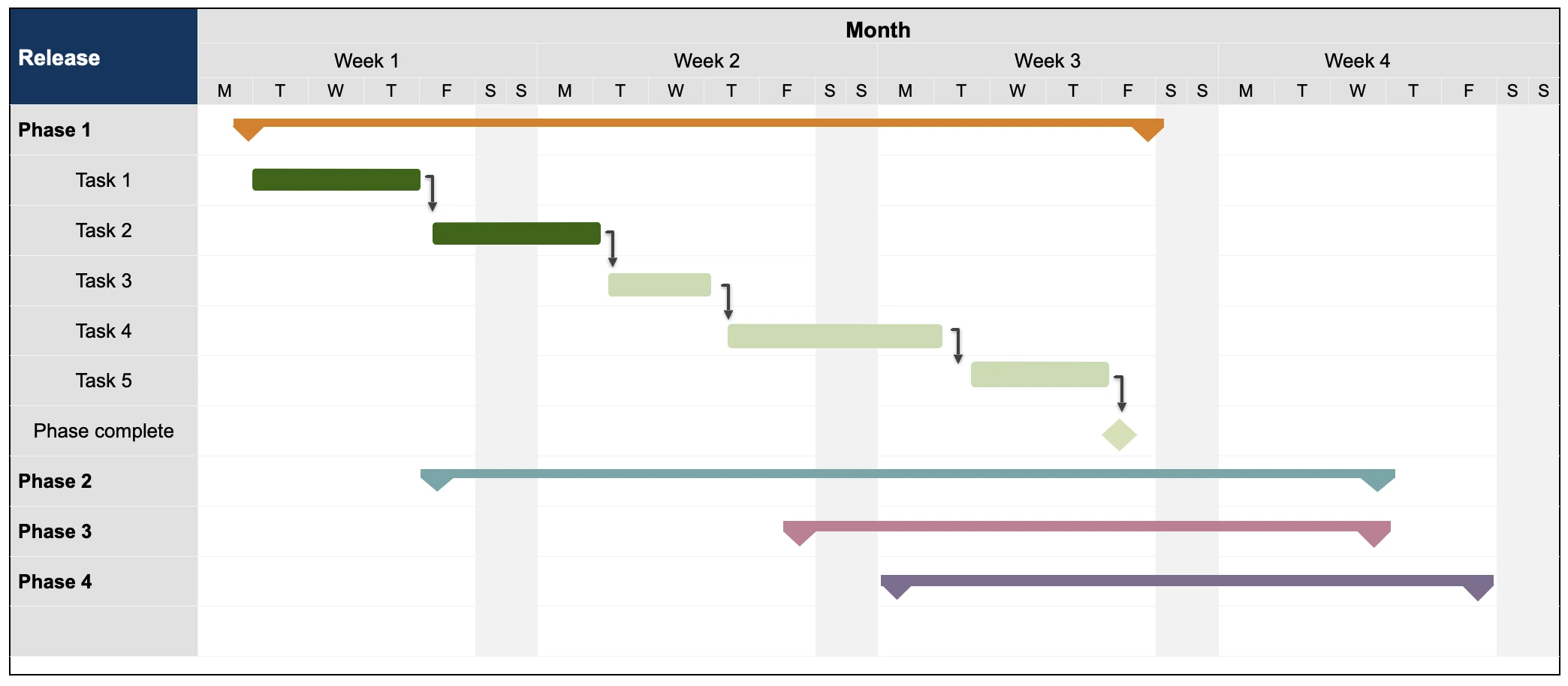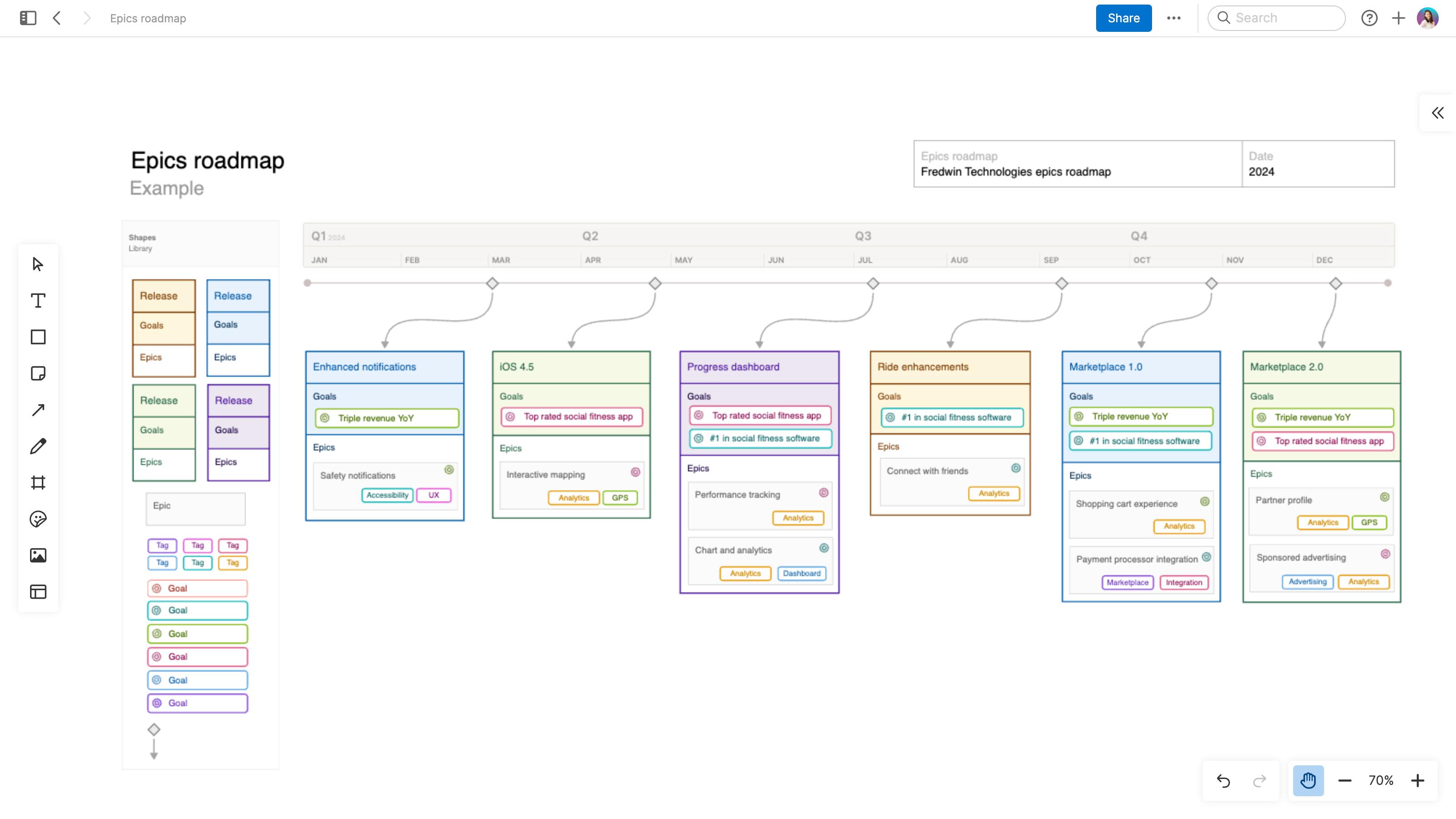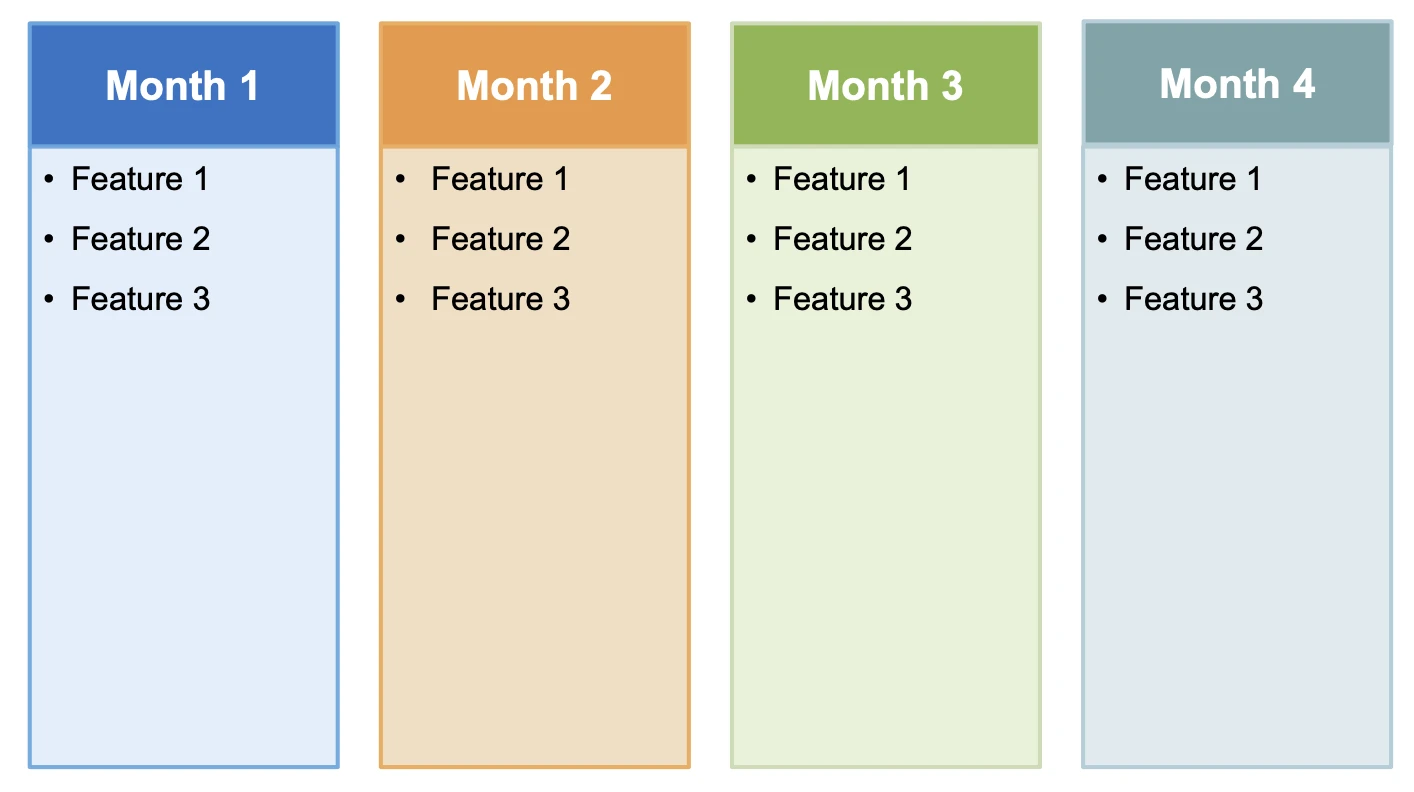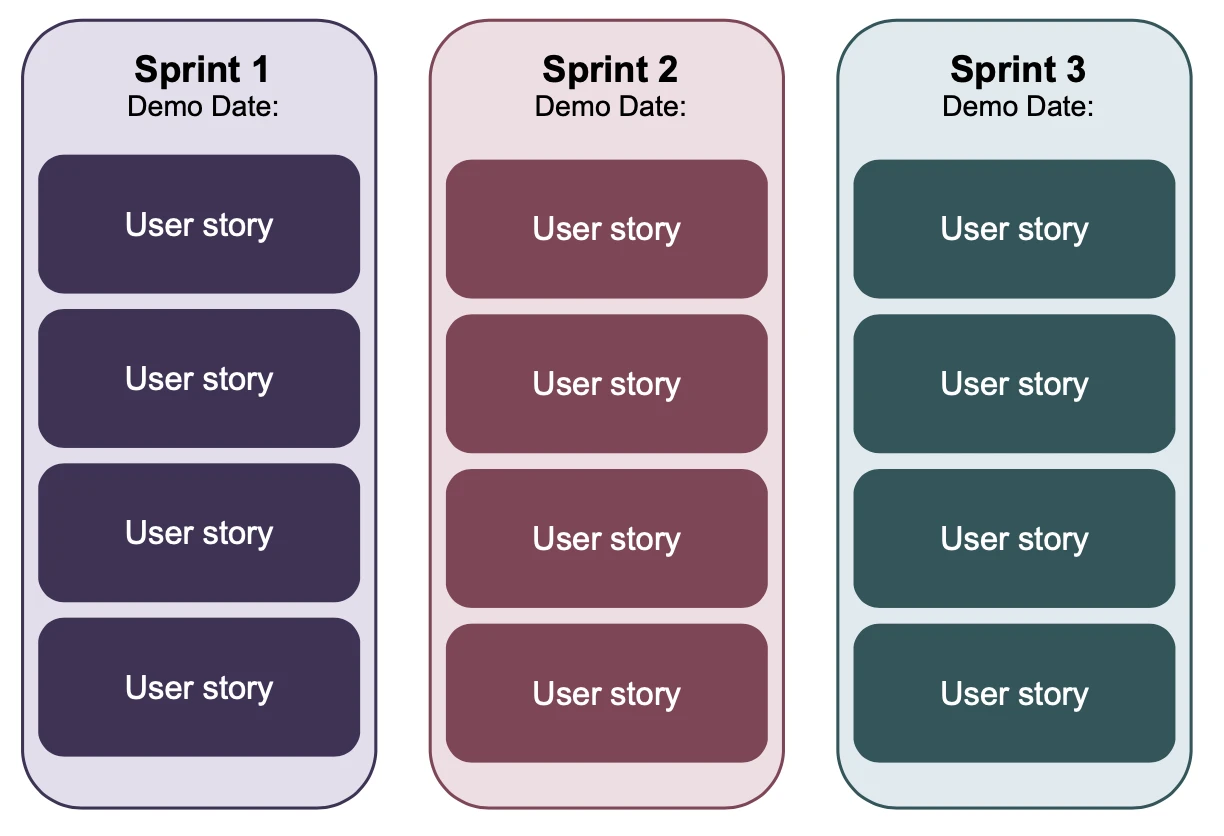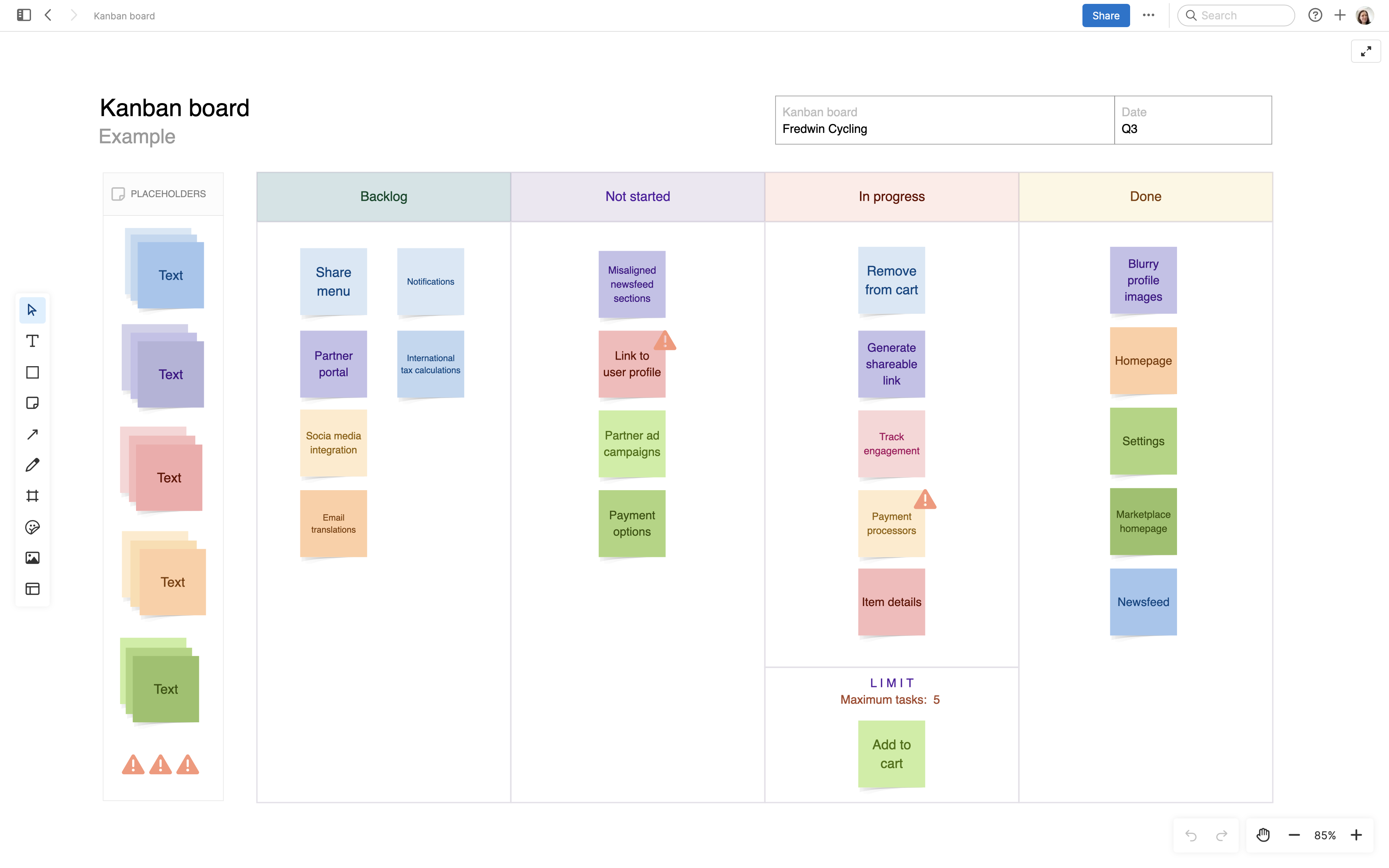20+ product roadmap templates for product teams
Get started fast with sample product roadmaps
Last updated: August 2025
Quickly build effective visuals of your plans with guided product roadmap templates. Learn which components to include and see examples of different types of roadmaps that product managers can customize for different audiences. |
Product roadmaps are multipurpose visual tools. Every product manager needs one — several, actually. A strategic roadmap can reveal a compelling story about your product goals. A release roadmap highlights the timing of when you will deliver new functionality for customers. And a features roadmap can align your agile development team on timing and priorities. Together, these different roadmaps paint a complete picture of your product plans.
But where to start? What is the best approach for your product development team? Some teams can get by with building and managing product roadmaps in static spreadsheets or presentations. (And we have plenty of those that you can download for free from this guide.)
Most teams quickly tire of playing version control whack-a-mole. It is hard to showcase progress when you are worried about outdated roadmaps floating around. All that value you plan to deliver to users and to the business gets overshadowed when an executive presents a now-obsolete roadmap to stakeholders.
Many organizations experience transformative gains by choosing a robust roadmapping tool like Aha! Roadmaps. It includes everything you need to build breakthrough products — from setting strategy to creating product plans and measuring value. But sometimes, you will want to sketch out ideas that you can quickly visualize on a timeline. For this, we also offer lightweight whiteboard templates.


















